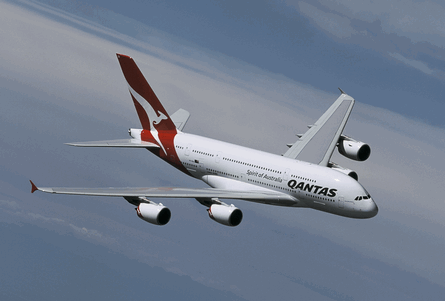Qantas's first Airbus A380 is due on 22 October to perform the second "fuel-optimised" flight under the Asia and South Pacific Initiative to Reduce Emissions (Aspire) project that was established by Airservices Australia, Airways New Zealand and the US Federal Aviation Administration.
The first Aspire flight was operated by an Air New Zealand Boeing 777 on a scheduled service between Auckland and San Francisco on 12 September. The flights are designed to measure the impact of optimum flight conduct on reducing carbon emissions using the latest air traffic management procedures and technologies and eliminating normal operational restraints.
The ANZ flight saved 4,542 litres (1,200USgal) of fuel and 11 tonnes of carbon dioxide compared with a normal Auckland-San Francisco flight.
 |
|---|
© Qantas |
The Qantas A380 will operate between Los Angeles and Melbourne, which means that wind and weather will be coming towards the aircraft rather than going in the same direction as on the ANZ flight, says Airservices. The flight will involve similar ATM technologies and processes as the ANZ flight, with an added focus on tailored arrivals.
"The aircraft will be providing us with data on a regular basis as it crosses the Pacific, similar to that of the first flight. But we'll be checking the accuracy of the data and then we will be able to provide wind and other conditions information, enabling the flight management system to calculate the best vertical path for descent. In turn, this should allow the crew to fly their controlled descent approach without using the speedbrake or throttle," says Airservices.
The third Aspire flight, involving a United Airlines Boeing 747-400, is planned for 14 November between Sydney and San Francisco.
Source: Flight International























